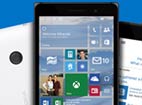AT&T’s On-Demand service, which uses software-defined network (SDN) architecture, is reducing business customers’ provisioning times by as much as 95 percent. LightReading reports that the On-Demand platform is available in more than 100 markets and moved from concept to trials in only six months.
The carrier has aggressively pioneered technologies that drive efficiency. John Donovan, AT&T’s senior executive vice president of technology and network operations, provided some insight into the company’s approach:
AT&T has been a first mover in the transition to a New IP network, as well as a clear leader in implementing SDN and NFV technologies within its own organization and for its customers. Donovan said this has been a necessary move for it “Moore’s Law no longer works” for AT&T and networking can’t keep up with the growth in traffic.
Samsung in Space
Numerous proposals have been made on ways to support wireless and cellular communications that utilize what at first seem to be odd techniques.
Samsung, according to Digital Trends, has issued a proposal that involves the use of 4,600 low earth orbiting (LEO) satellites and would generate a zettabyte of capacity monthly.
The plan, which was devised by Farooq Khan, Samsung’s president of research and development, focuses on satellites orbiting at about 1,500 kilometers, which is much lower than geostationary satellites and theoretically would cut down on latency challenges and increase speeds compared to other systems.
Two Weeks In, Windows 10 Makes Inroads
Windows 10’s first two weeks of general availability have produced what appear to be healthy usage statistics, according to analytics firm Net Applications. The firm reported that during the week of August 2 through 8, 2.7 percent of all PCs ran the new operating system and 3 percent of Windows devices had upgraded.
It is easy to lose sight of the huge installed base of Windows, but this text from ComputerWorld provides some perspective:
With an estimated 1.5 billion Windows devices worldwide — a figure that Microsoft has repeatedly touted — the 3% attributed to Windows 10 represents more than 45 million systems. The week prior, when Windows 10 was available to a smaller number of Windows users, Windows 10’s 1.2% represented approximately 17 million machines.
Skype for Business Ready for iOS, Android
The transition of unified communications and collaboration (UC&C) from purpose-built packages and platforms to an outgrowth of consumer services took a huge step forward with the purchase of Skype by Microsoft in 2011. Another important step was taken this week as Skype for Business, which launched in April, became available on the iOS and Android operating systems.
Skype for Business has the look and feel of Skype’s consumer version, but some new features include larger buttons to facilitate call management, add participants and mute calls.
New York Story
Cablevision and Verizon are having a particularly nasty fight in The Big Apple. Cablevision filed a lawsuit against the carrier in January that claimed Verizon was being untruthful in saying that it offered the fastest Wi-Fi service. At that time, according to WirelessWeek, Cablevision released ads suggesting that Verizon was lying.
This week, the U.S. District Court issued a temporary restraining order against Cablevision directing that it stop the ads. Cablevision previously sued Verizon over the marketing of the carrier’s FiOS service.
Carl Weinschenk covers telecom for IT Business Edge. He writes about wireless technology, disaster recovery/business continuity, cellular services, the Internet of Things, machine-to-machine communications and other emerging technologies and platforms. He also covers net neutrality and related regulatory issues. Weinschenk has written about the phone companies, cable operators and related companies for decades and is senior editor of Broadband Technology Report. He can be reached at [email protected] and via twitter at @DailyMusicBrk.



